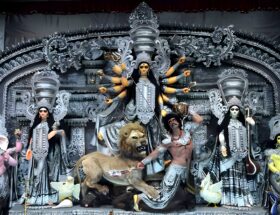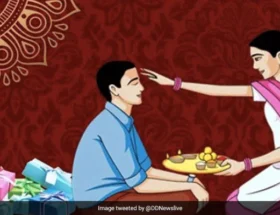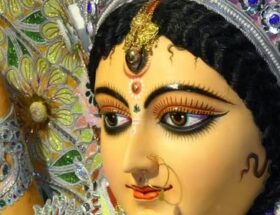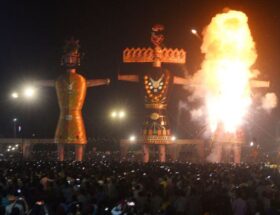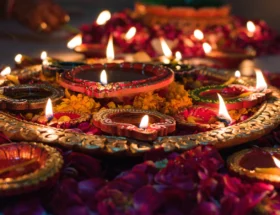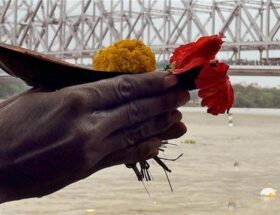Lohri Festival: The Harvesting Festival End of Punjab
Introduction to Lohri Festival
Lohri Festival is a very vibrant and lively festival widely celebrated in Punjab and during the rest of North India. The day heralds a healthy outing of the winter season and the brightening of the days. It is considered the most important festival for farmers, with information on the harvesting of rabi crops of sugarcane, wheat, and mustard. Communities that come together in jubilation have traditional music, dance, and food to appreciate good yield from nature.
Significance of Lohri Festival to Punjabi Culture
Belonging to the larger Punjabi heritage, lohri is a festival tied to the refers of the rabi seasons. This shall be said in celebration and thanksgiving for the farmers. It derives, in addition, directly from the winter solstice, meaning it is a signal to the end of the coldest days of the year. Description: Lohri is a get-together time for the families of Punjabis, when people meet with family and friends, narrate stories of folklores and myths, and enjoy the comfortable heat of the bonfire. It is moreover a festival of fertility and rejoicing over a brand-new start in life, and generally speaking, it is taken in more eagerly by families where there has been a recent union or a birth.
Traditional Customs and Rituals of Lohri Festival
The celebrations for Lohri are associated with scores of traditional customs and rituals. The bonfire is the focus of attraction of the whole program, particularly its lighting. All people, mostly folk singers, sit in a circle all around it and sing folk songs, accompanied by high energy Bhangra and Gidda. Families make offerings by throwing sesame seeds, jaggery, popcorn into the flames with respect to the God as gesture for seeking their favour to give them good crop.
Another key ritual associated with Lohri is the sharing of prasad, the chief being offerings of gajak, rewari, and peanuts. Even children have important roles in Lohri; they go from door to door singing folk songs at the festival of Lohri to ask for cozy treats and money.
Lohri Festival and Its Relationship with Agriculture
Lohri bears a close association with agriculture, being that a large number of its citizens in Punjab are majorly into agriculture. Farmers celebrate especially as they harvest their rabi crop and prepare for a new cycle in agriculture. Bonfire represents the sun that is necessary for growing the crops. It is a word of thanksgiving towards the elements for the good harvest and, at the same time, a symbol where one wishes for prosperity in the coming year too.
Culinary Delights of Lohri Festival
The festival is very famous for its traditional cuisine where food forms such an important part of the Lohri celebrations. Basically, the most common dishes made during Lohri are Makki di roti and Sarson da saag.
The cooks smear dollops of butter or ghee on the vegetables prepared with freshly picked crops, which enhance the taste. Families prepare sweet dishes like Gajak, rewari, and til laddoos as part of the Lohri celebrations, and they often distribute these treats as prasad. Another important aspect of Lohri is the community meal or langar; everyone from the rich to the poor gather and eat as equals. This very ritual shows the spirit of togetherness that community is the foundation of festivity.
Lohri Fun-Filled Nationally
Lohri is primarily a festival in Punjab but is also popular in various parts of India, especially the northern states. Equally cheerful celebrations of Lohri occur in Delhi, Haryana, and Himachal Pradesh. People arrived in cities and organized bonfires and cultures to preserve traditions.
The festival has gained international popularity among contemporary Punjabi communities worldwide, including Canada, the United Kingdom, and the United States. During this time of year, Punjabis around the globe joyfully celebrate their heritage together.
Conclusion: Joy of Lohri Festival
Lohri stands for much above than a festival and is a symbolic celebration of life, fertility, due rewards of hard work, and the like. May it be a time of families together, closer communities, and all sharing in the joy of harvest-home blessings. The fire of Lohri will replace the sun, shining warmth and light for the collective creatures to celebrate their entire life course. Lohri has given Punjab a unique charm, which continues to bring people together through culture, community and agriculture. These parts interact and reinforce each other in an invincible relationship.
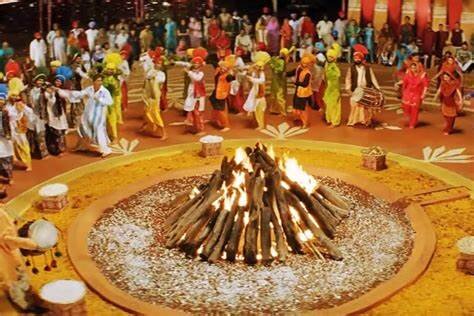
Sarees that women can wear in this festival: Dark-Green Dhakai Jamdani Saree
FAQs on Lohri
1. What is Lohari and why do people celebrate it?
People in Punjab and other north Indian states celebrate Lohri, a traditional festival that marks the end of summer and the beginning of harvest festival. Basically, It is considered as a festival of rabi crops like sugarcane, wheat and mustard.
2. When do people celebrate Lohri?
Lohri comes on the eve of 13th January of every year, basically one day before the Makar Sankranti festival. This comes somewhere close to the winter solstice and thus symbolizes the start of the longer days.
3. What are the chief rituals in the festival of Lohri?
The chief rituals of this festival include bonfire, singing traditional folks songs, bhangra, and gidda all around the bonfire while throwing foods like sesame seeds, jaggery, and popcorn in the flames.
4. What foods do people eat during Lohri?
Makki eats roti (wheat bread), sarason da saag (green mustard) and traditional dishes during Lohri, along with sweets like gajak, rewari and til laddus (sesame sweets).
5. How does the festival of Lohri have?
Hence, Lohri is closely linked to farming since it is the harvest of the rabi crops. It therefore becomes a token of thanksgiving by farmers for their successful harvest and to pray for times more prosperous ahead.
6. What does the bonfire mean during Lohri celebrations?
The Lohri bonfire symbolizes the sun’s warmth, important for crops and ending darkness, as days lengthen.
7. How do family and friends celebrate Lohri together?
Lohri is the festival when, in the evening, people sit with their family and friends around a big bonfire. They sing folk songs with dhol beats, share festive foods, and exchange gifts. This actually is the time to socialize and bond.
8. Do people outside Punjab celebrate Lohri?
People in India celebrate Lohri in many ways, but the joy of people in Punjab, Haryana, Himachal Pradesh and Delhi is unparalleled. The festival has reached global Punjabi community in countries like Canada, UK and USA.
9. What role do children play in Lohri celebrations?
Children play an important role in Lohri by going from house to house and collecting traditional songs, recipes and money. This tradition is known as “Lohari Loot”.
10. Why is Lohri particularly important for newlyweds and newborns?
People deem Lohri to be more than anything else highly auspicious for newlywed or newly born families. Infusing enthusiasm in the parents, newborns make them celebrate the event as if the festival itself brings an omen for new beginnings and progeny.
Meta Description:

